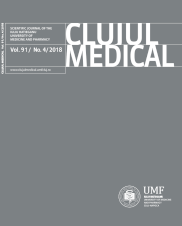A LINGUOVERTED IMPACTED TOOTH WITH OROCUTANEOUS FISTULA – A RARE CASE REPORT
DOI:
https://doi.org/10.15386/cjmed-945Keywords:
orocutaneous fistula, linguoversion, odontogenic keratocystAbstract
The orocutaneous fistulous tract of odontogenic origin is often a diagnostic challenge, due to its rare manifestation and absence of dental signs and symptoms. The odontogenic cutaneous fistula is often misdiagnosed as a superficial skin lesion of non-odontogenic origin delaying the treatment. The diagnosis and treatment must be precise and swift to improve the clinical outcome and minimize the complications.
This article presents a rare case of odontogenic keratocyst involving a linguoverted impacted third molar presenting as orocutaneous fistula. The patient was initially treated with empirical antibiotic therapy with no resolution of the cutaneous fistula and thickening of the skin around the sinus opening resulting in cosmetic deformity. Once the fistula was attributed to the underlying odontogenic cyst, treatment was done by cyst enucleation along with the extraction of tooth and fistula excision. The purpose of the paper is to emphasize the importance of early and accurate diagnosis and prompt management of the orocutaneous fistula due to the odontogenic origin.
Downloads
Additional Files
Published
How to Cite
Issue
Section
License
The authors are required to transfer the copyright of the published paper to the journal. This is done by agreeing to sign the Copyright Assignment Form. Whenever the case, authors are also required to send permissions to reproduce material (such as illustrations) from the copyright holder.

The papers published in the journal are licensed under a Creative Commons Attribution-NonCommercial-NoDerivatives 4.0 International License.

